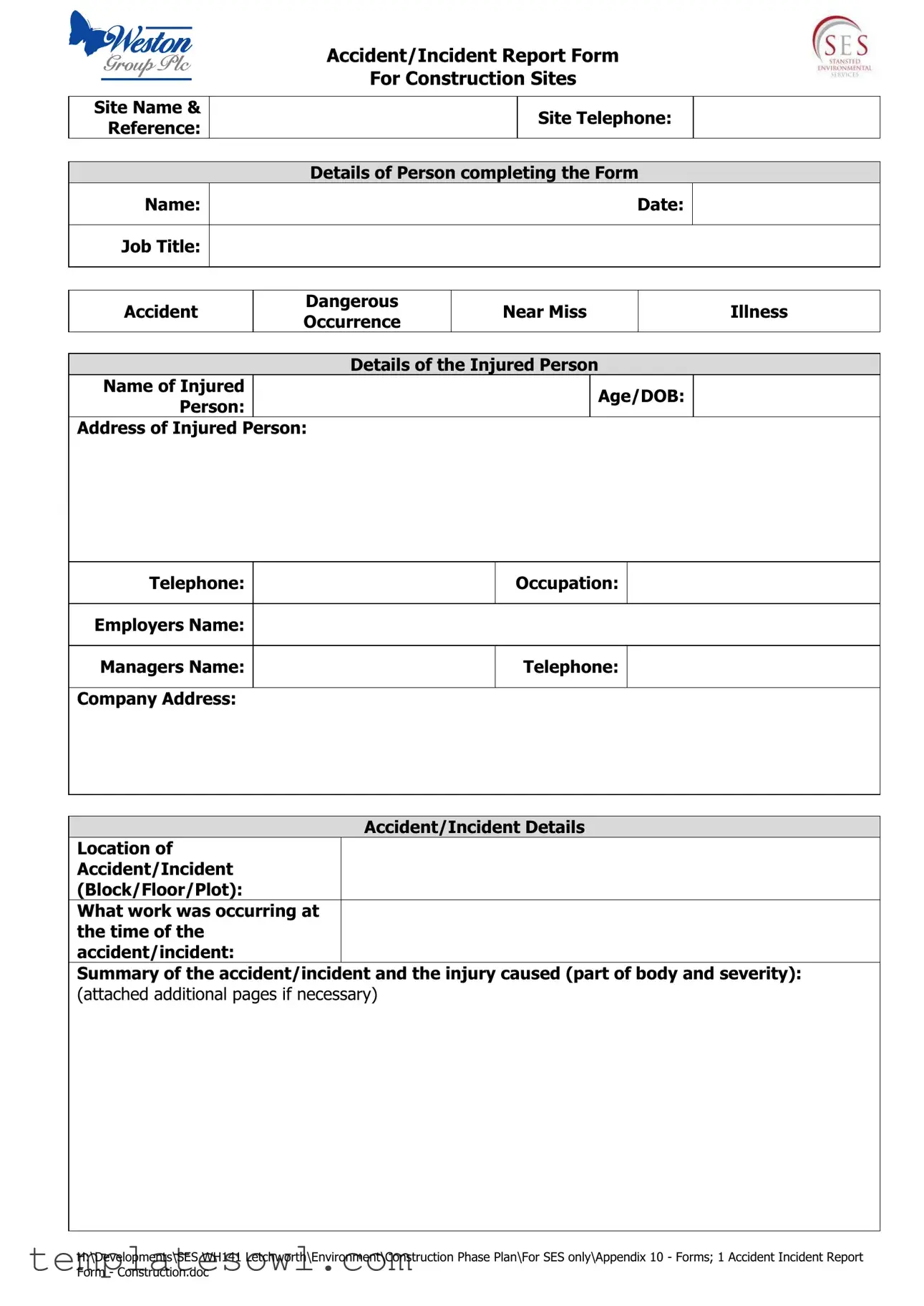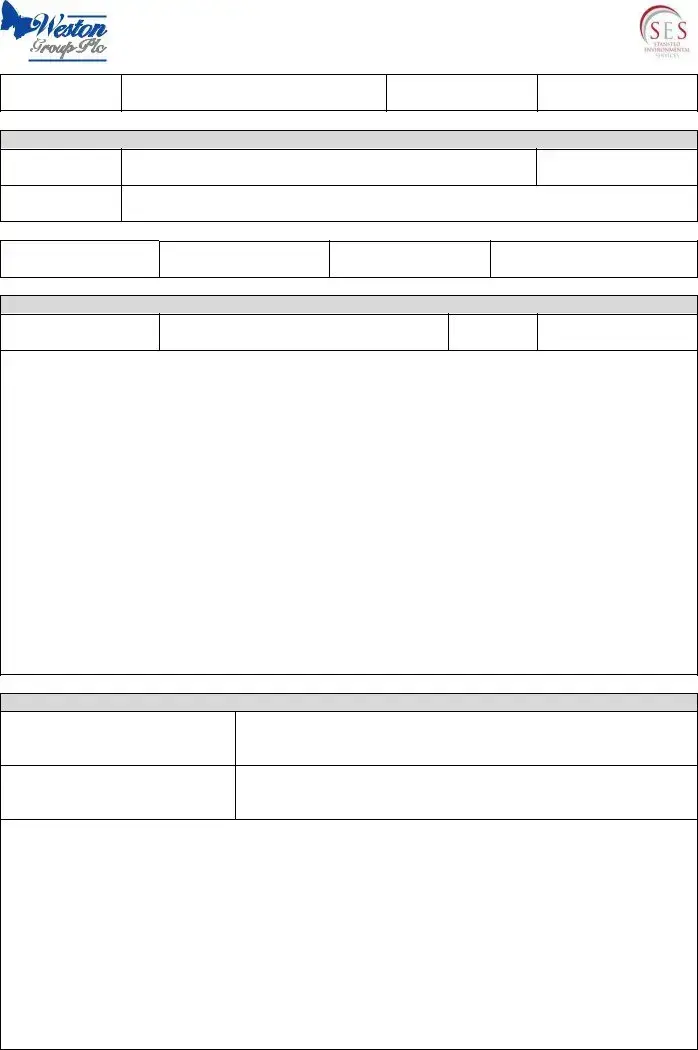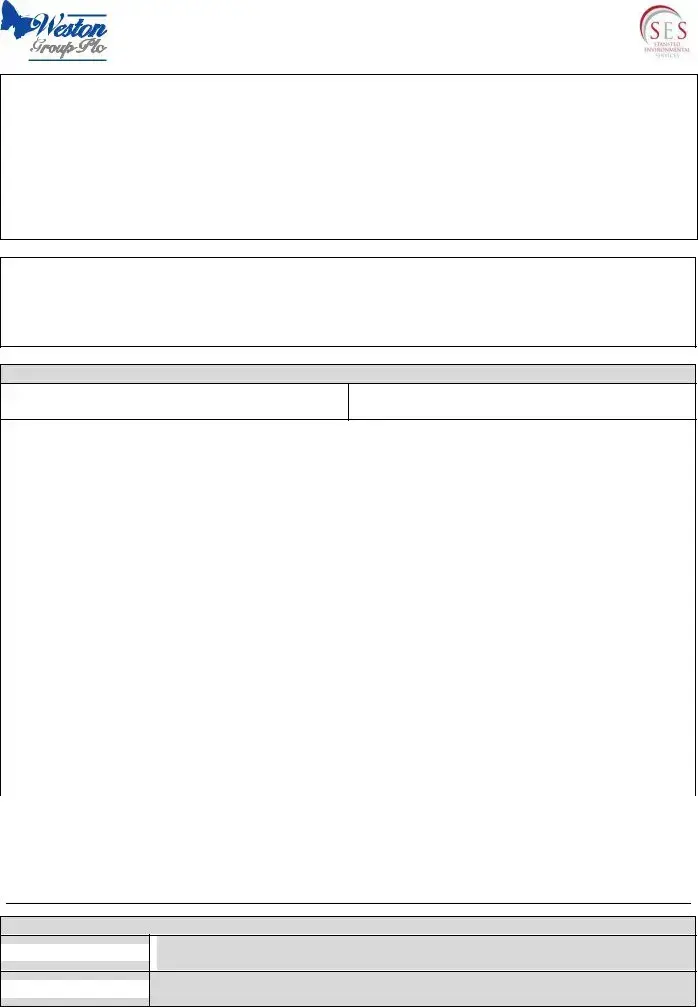What is the purpose of the Construction Accident Report form?
The Construction Accident Report form serves to document incidents that occur on construction sites. This includes accidents, dangerous occurrences, near misses, or illnesses. By collecting this information, the form helps analyze the circumstances surrounding the incident and identifies necessary safety improvements to prevent future occurrences.
Who should complete the form?
The form should be completed by the person who witnessed the accident or the individual responsible for reporting incidents at the job site. This might be a site manager, foreman, or safety officer. It is essential that whoever fills out the form has a good understanding of the event to provide accurate and detailed information.
What details are necessary to include in the report?
The report requires specific information, including the site name, contact details, and individual data for both the injured person and the person completing the form. It is crucial to describe the accident's location, the nature of the work being performed at the time, and a summary of what happened, including the part of the body affected and the severity of the injury. If necessary, additional pages can be attached for more in-depth explanations.
How is the report used after submission?
Once submitted, the report is reviewed by the relevant safety personnel or management team. They analyze the information to determine if any immediate actions are needed to enhance safety measures. Additionally, the data collected can help inform future training, safety protocols, and risk assessments to reduce the likelihood of similar incidents happening again.
What should I do if there were witnesses to the incident?
If there were witnesses, it’s essential to include their names, contact information, and their role in the incident on the form. This information is vital for follow-up discussions and may be needed during investigations into the incident. Ensuring that witnesses are documented accurately contributes to a comprehensive understanding of the event.
Are there any specific follow-up actions I need to take after submitting the form?
After submitting the form, it is important to note any follow-up actions taken to prevent a recurrence of the accident. This might include reviewing safety policies, conducting additional training, or enhancing safety equipment on-site. Notifying the person who was injured about their rights and any potential compensation processes may also be necessary.
What if the injured person does not have a CSCS card?
If the injured person does not possess a CSCS card, this must be noted on the report form. Including whether they were inducted into safety practices on-site is also essential. Providing this information helps ensure that proper safety protocols are followed and can highlight any gaps that need to be addressed moving forward.



 Accident Category
Accident Category 
 Follow-up
Follow-up